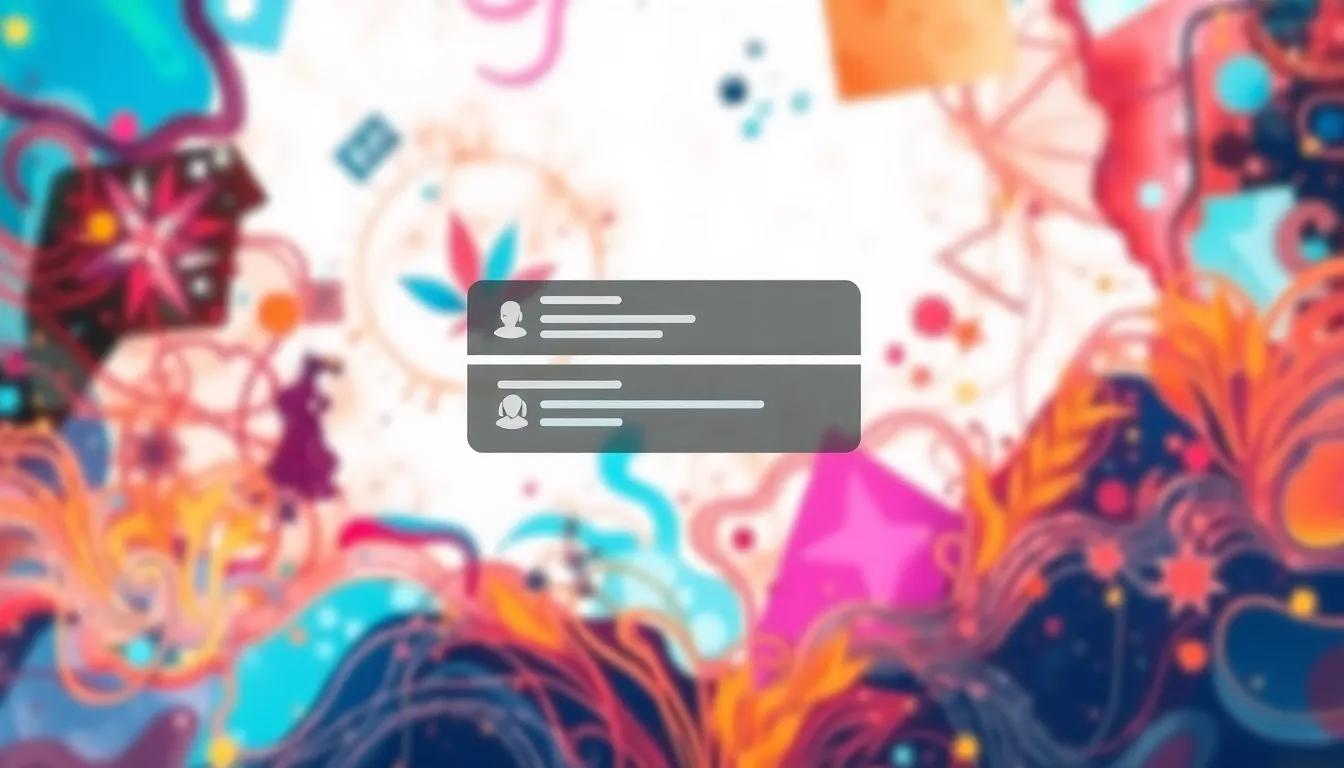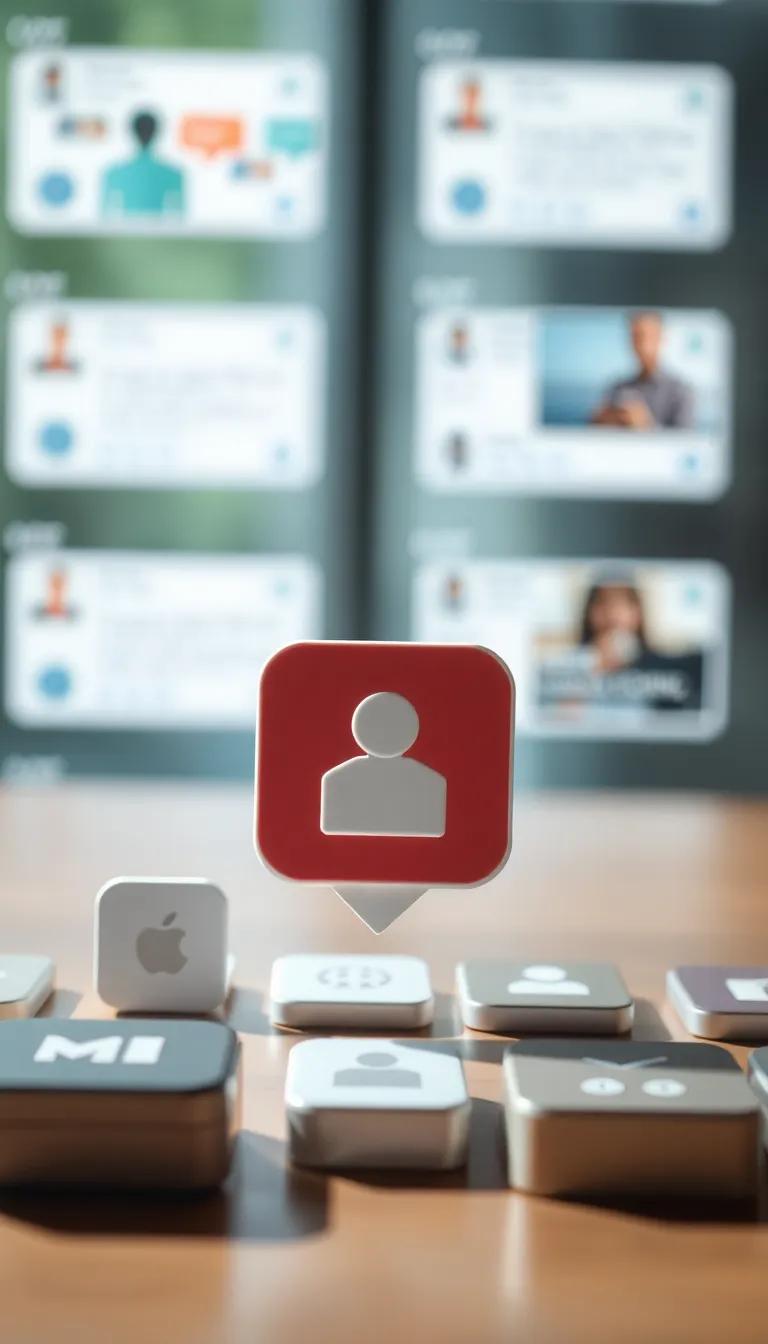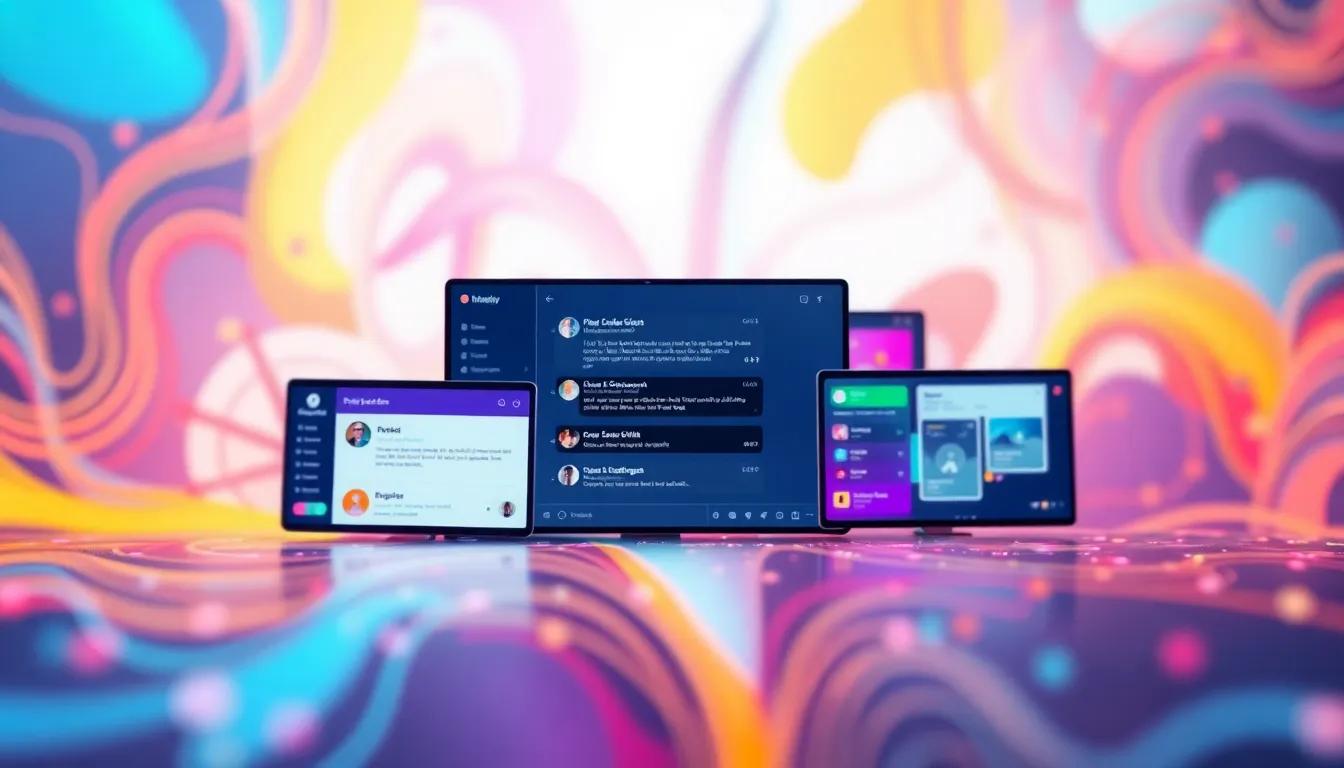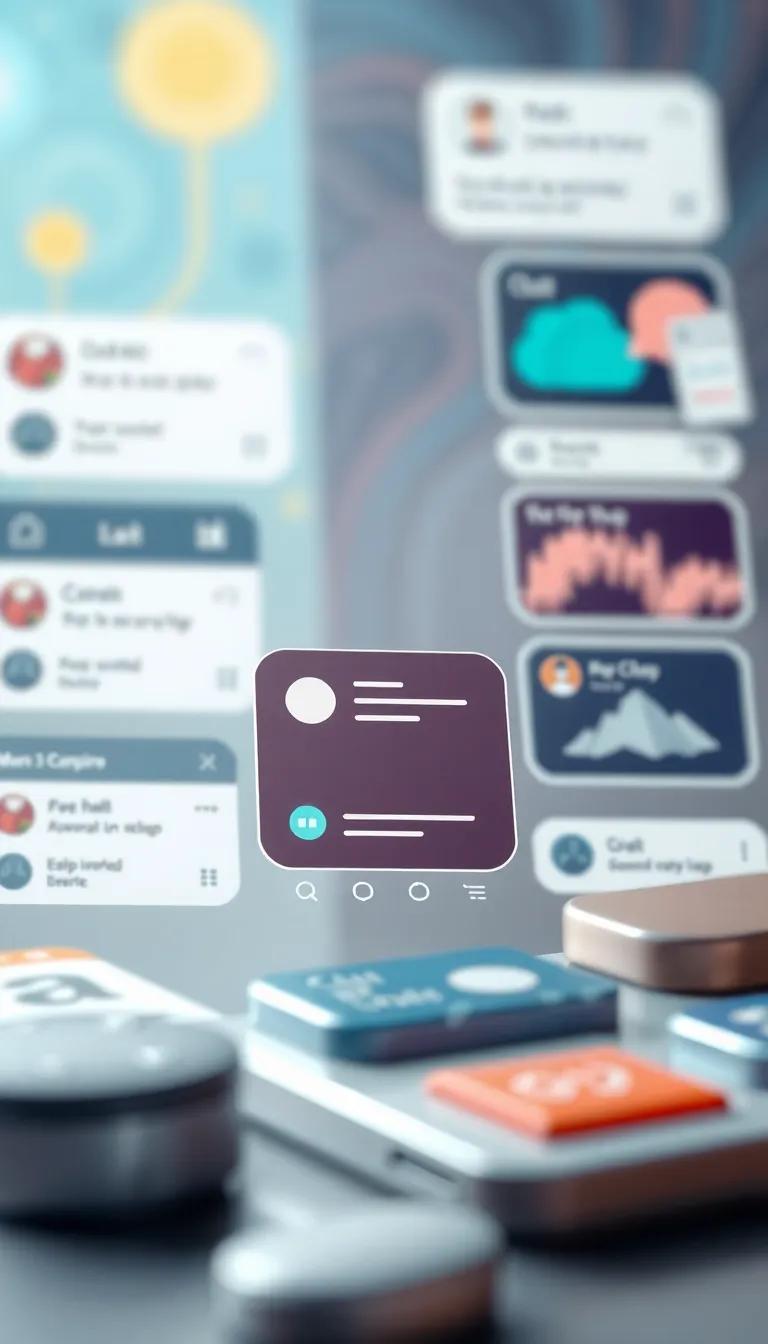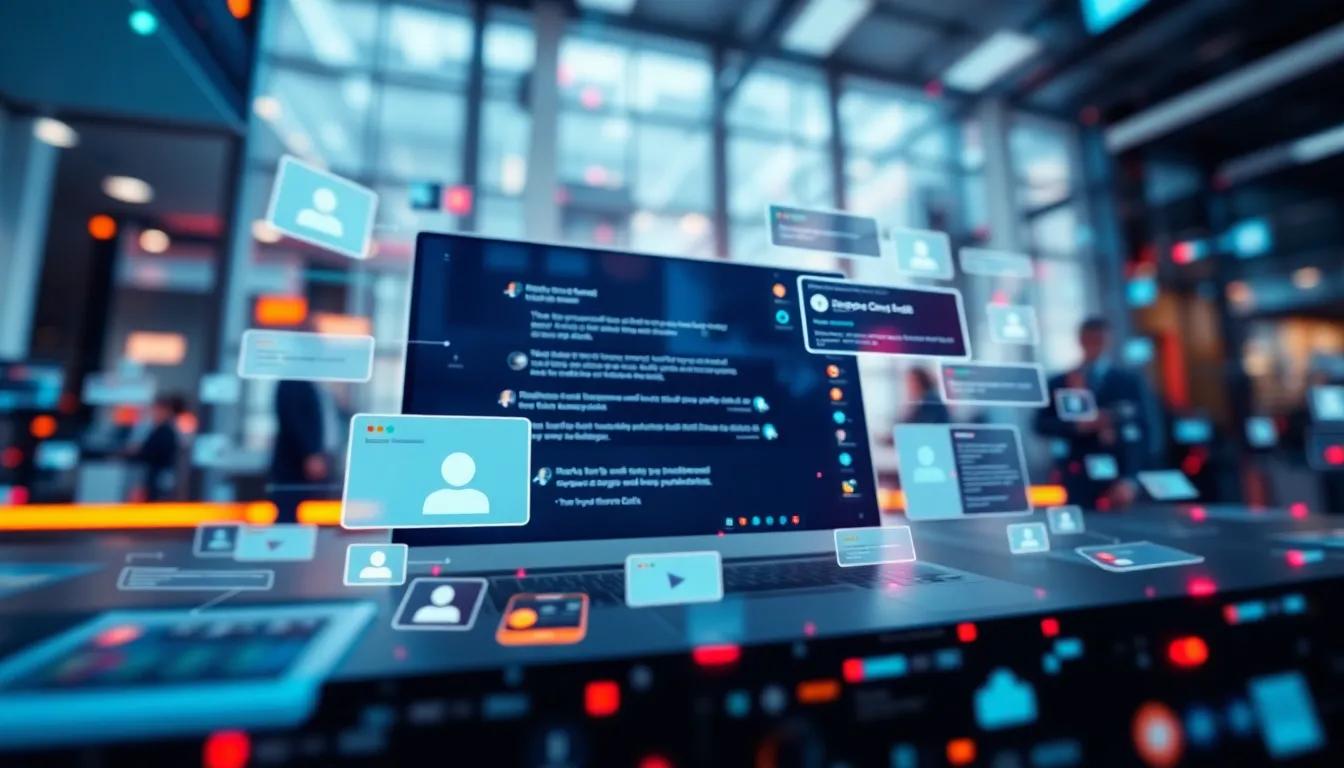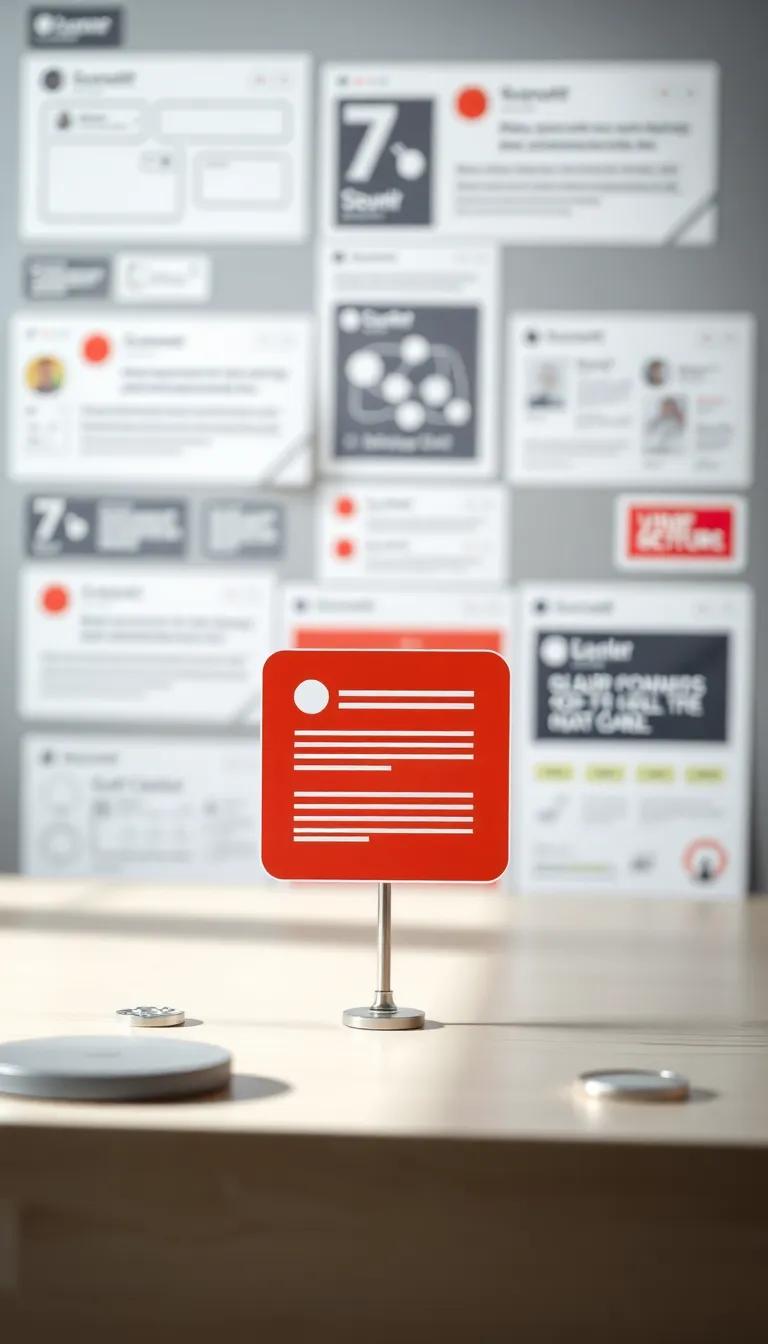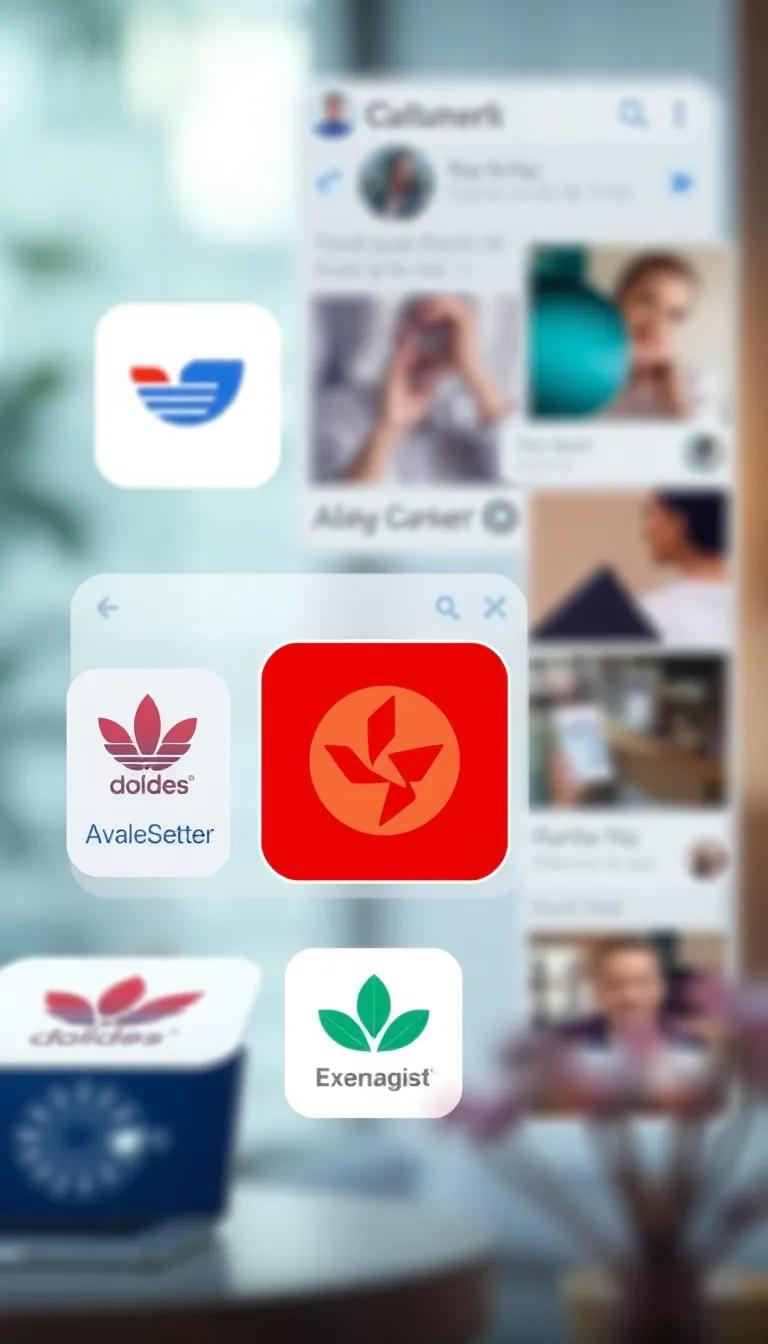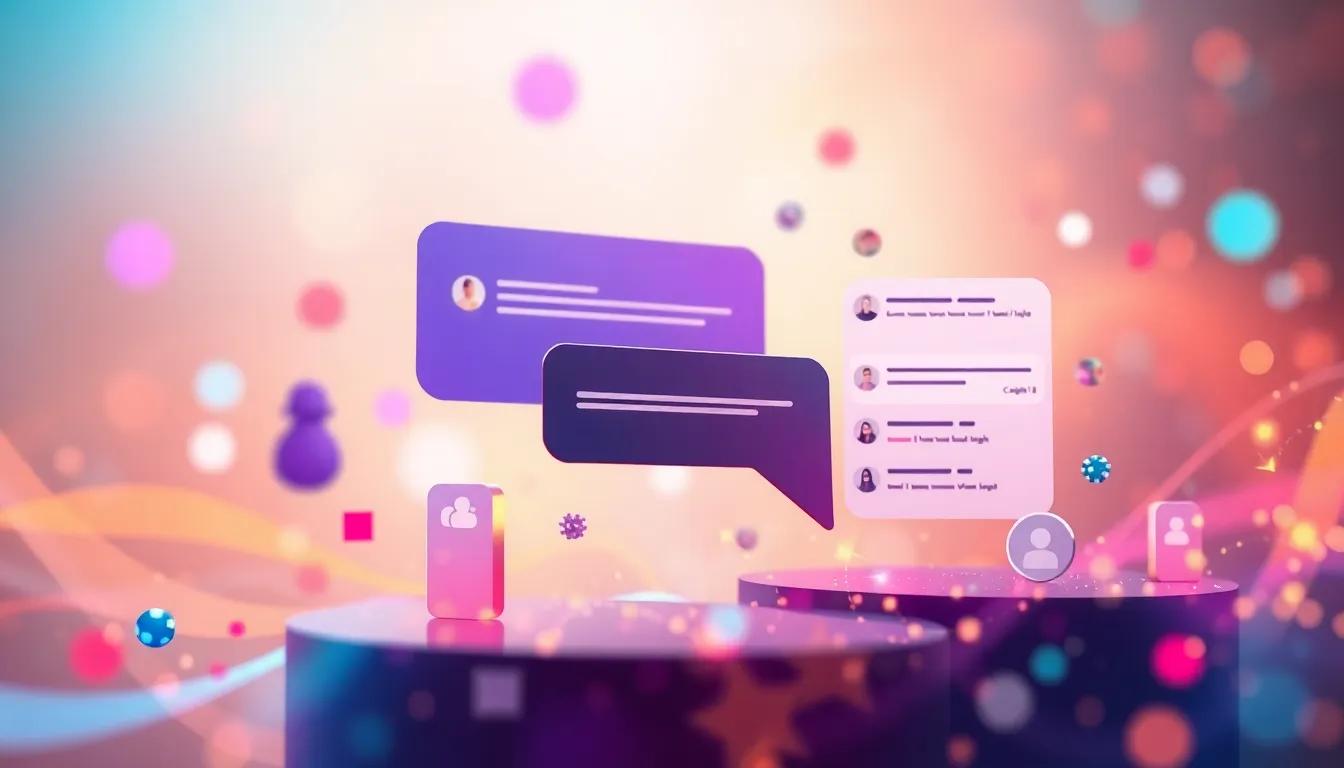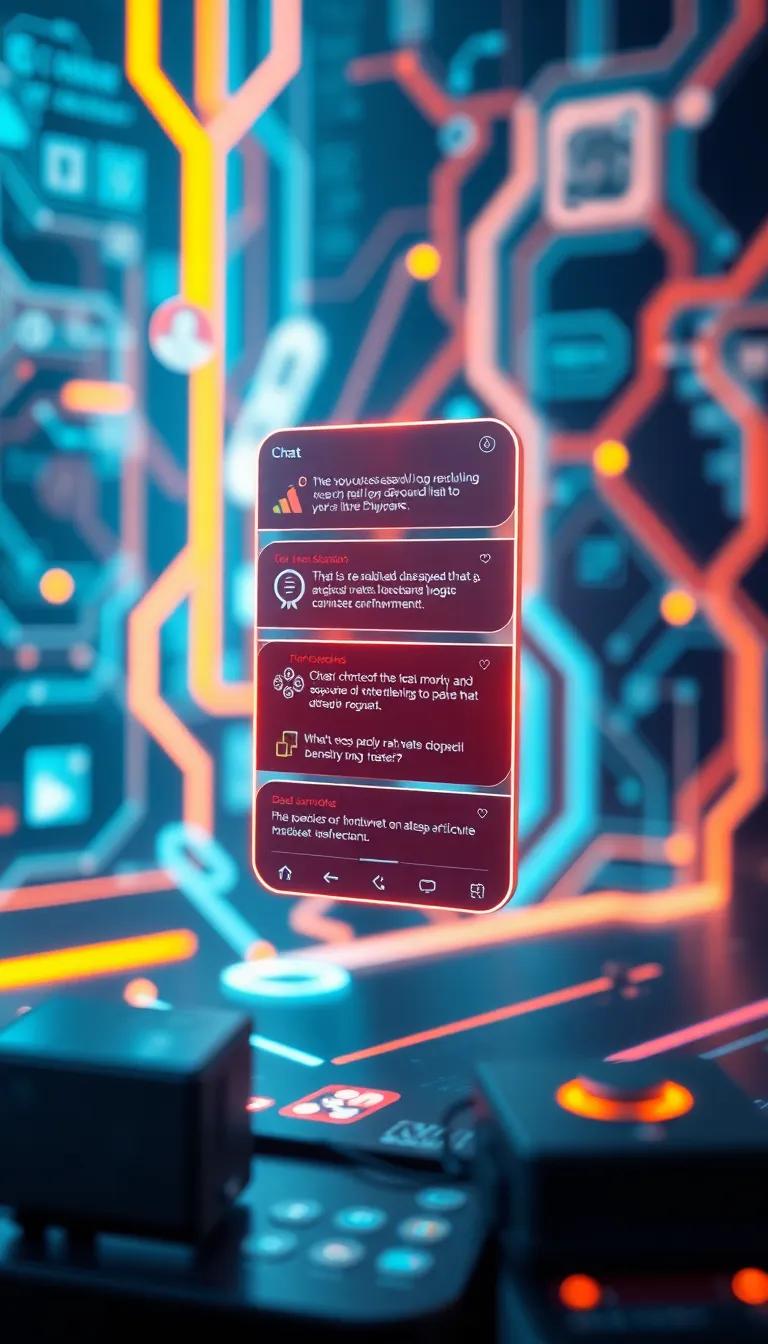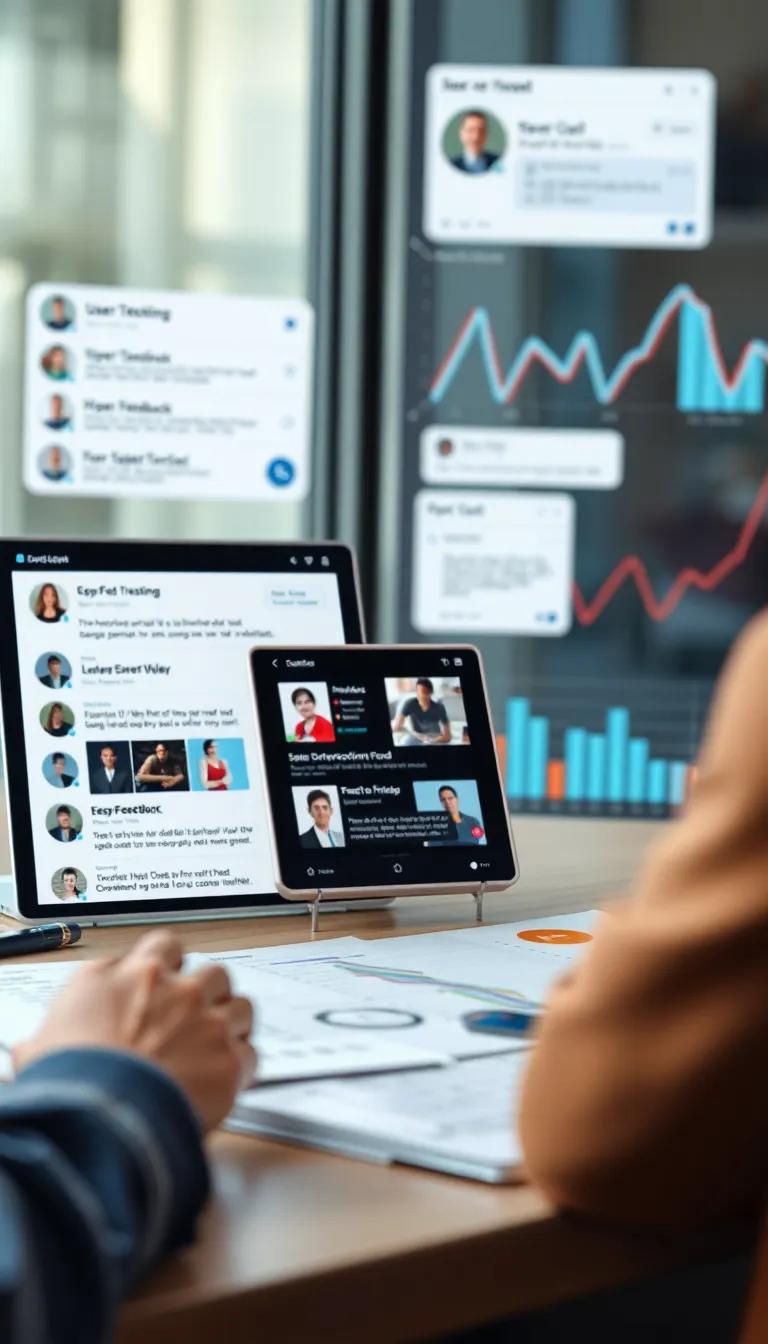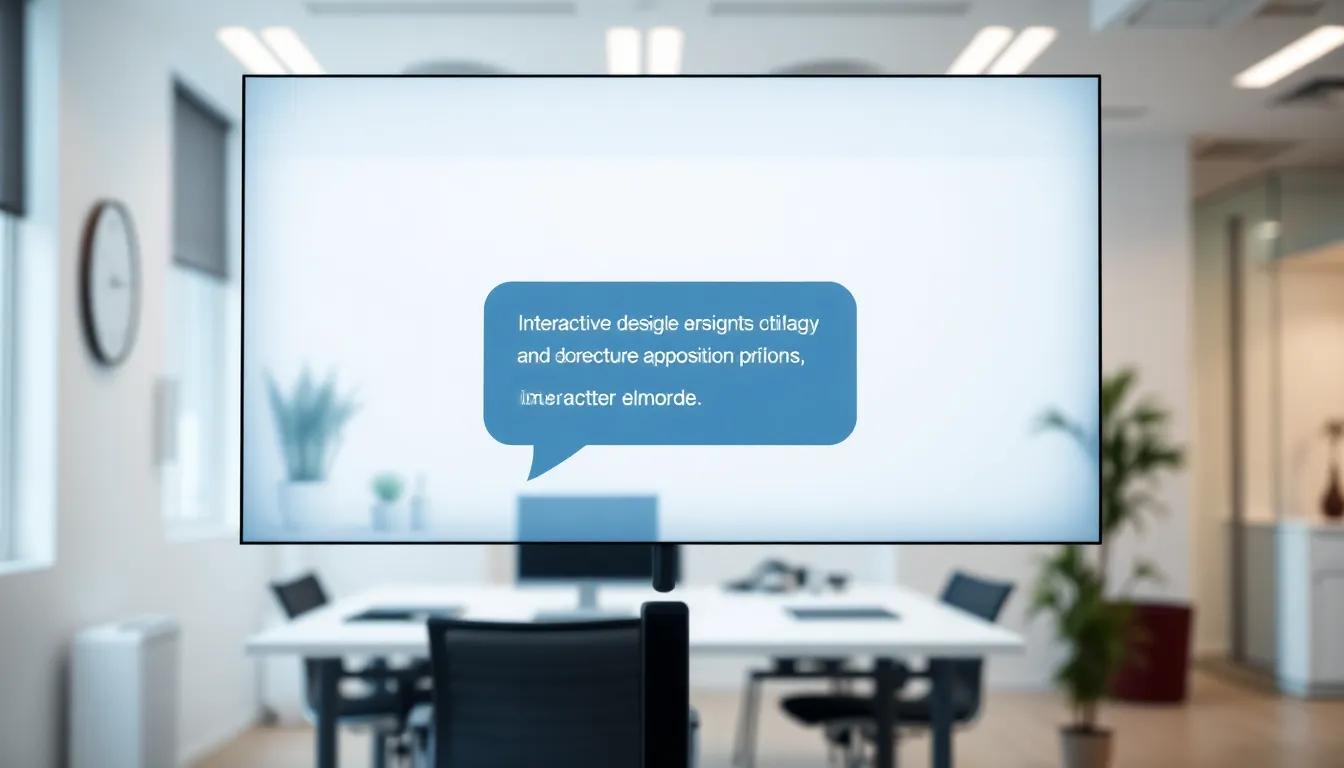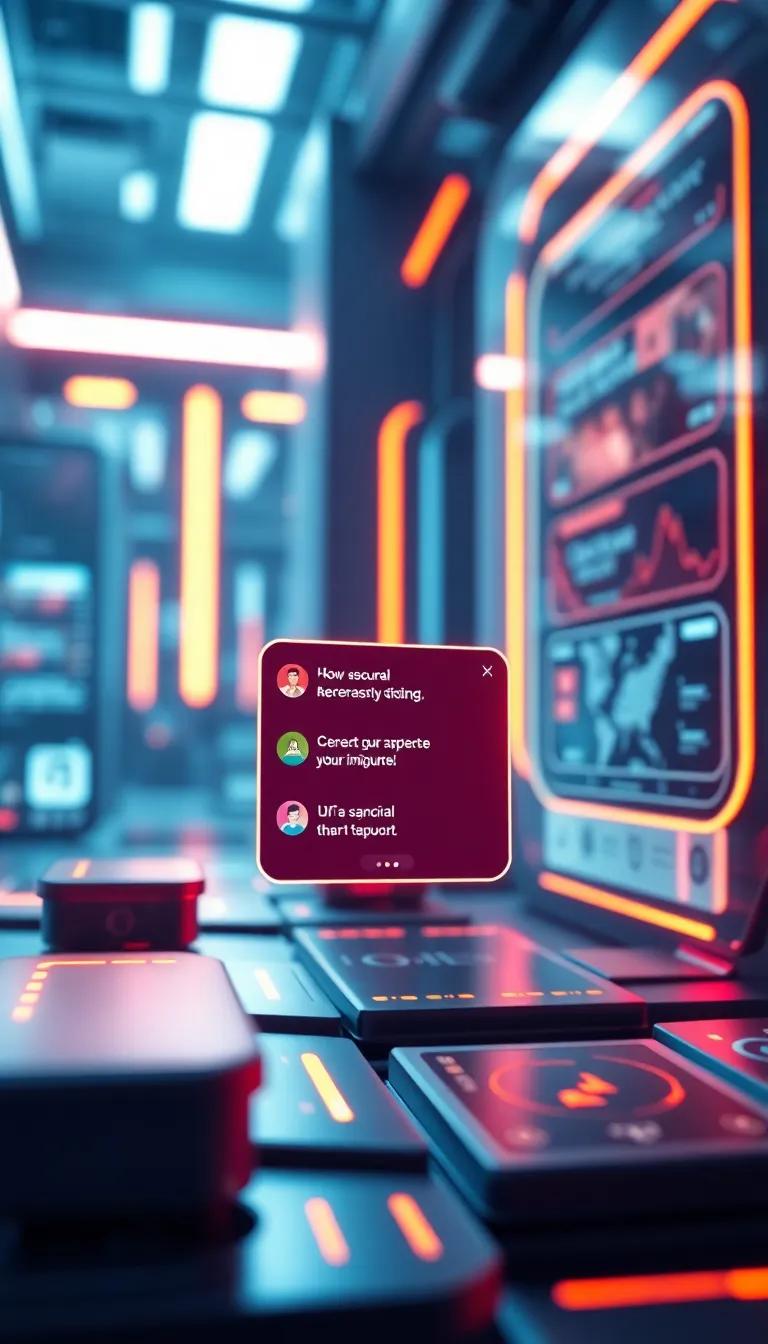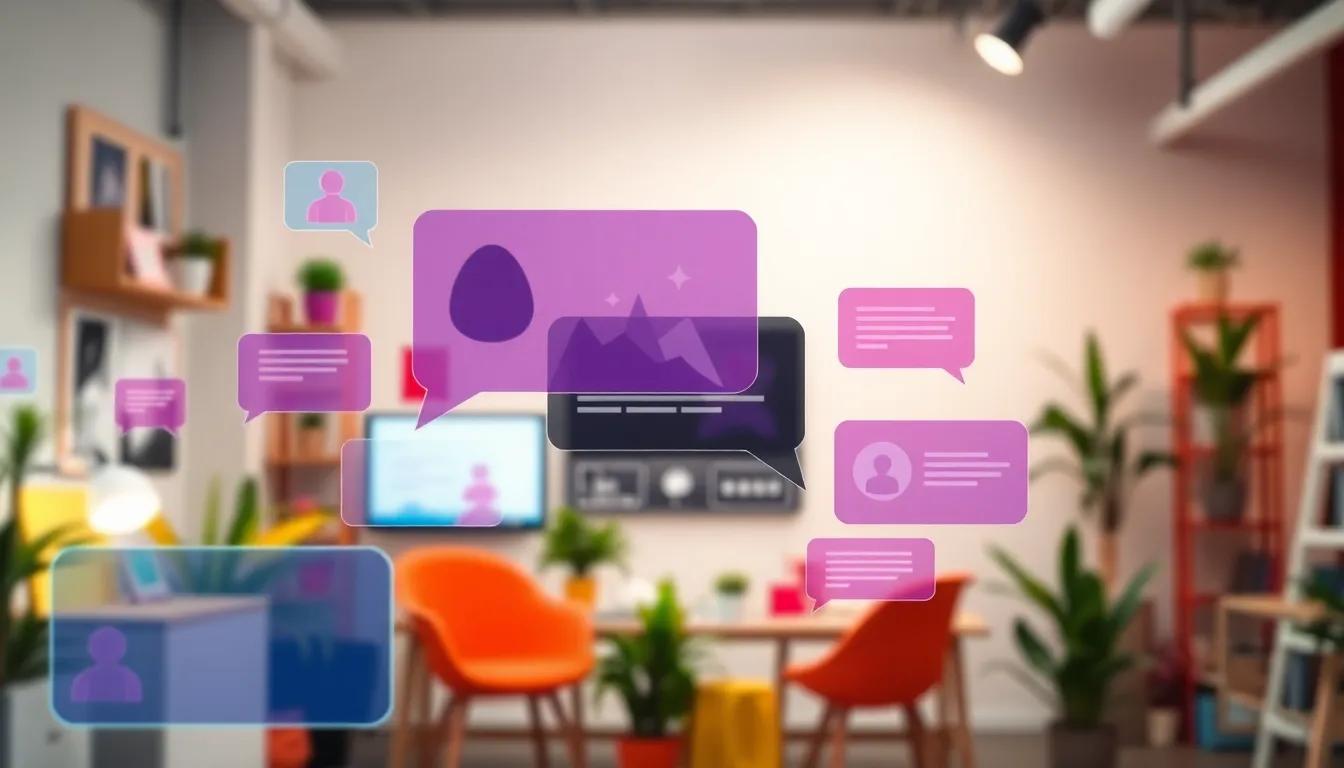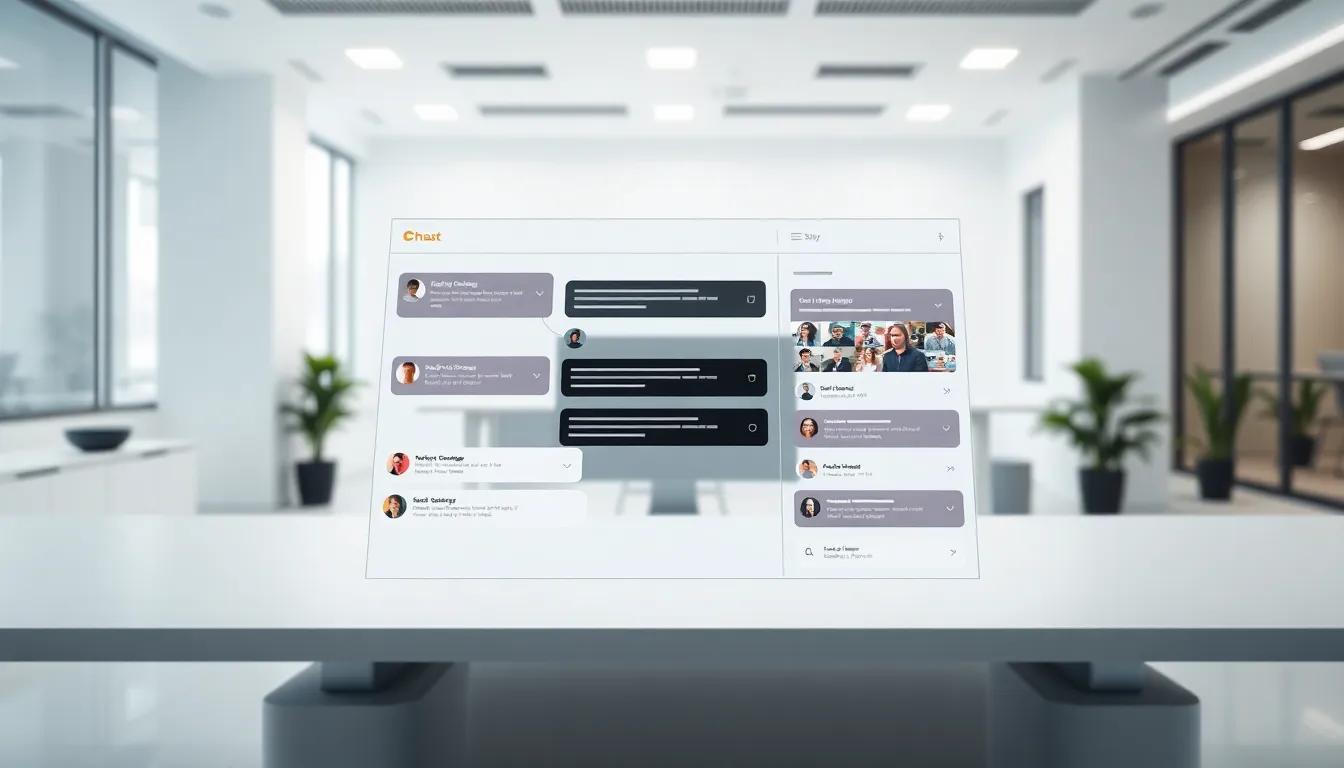Introduction
The importance of effective communication cannot be overstated, making chat widgets a vital component of any website’s user interface. A well-designed chat widget serves not only as a communication tool but as a means to engage users, provide instant support, and enhance overall user experience. This article delves into the creative aspects of chat widget design, highlighting the importance of aesthetics, functionality, and responsiveness that contribute to ensuring that visitors remain engaged and satisfied.
Chat widget design involves a combination of visual appeal and technical functionality, aiming to create an inviting atmosphere for users. By incorporating elements such as color schemes, positioning, and accessibility, designers can foster a welcoming space for interaction. Throughout this article, we will explore key tips and strategies that can help elevate your chat widget design, ensuring it stands out amidst the vast digital noise and enhances communication between users and businesses.
Understanding the Importance of Chat Widgets
The Role of Chat Widgets in Enhancing User Experience
Chat widgets have become a pivotal element in enhancing user experience on websites. They serve as a direct communication link between users and businesses, fostering a sense of immediacy and engagement that static content cannot achieve. When users visit a website, they often have questions or need assistance, and chat widgets provide a platform for instant interaction. This real-time capability not only helps to resolve queries promptly but also reduces frustration and improves overall satisfaction.
Incorporating a chat widget into a website allows businesses to personalize interactions. Users appreciate when their specific needs are acknowledged, and a chat widget can tailor responses based on their inquiries. This personalized communication can lead to increased trust and loyalty, encouraging visitors to return. Furthermore, chat widgets can capture user data for future reference, enabling more targeted marketing and support strategies.
Facilitating Communication and Engagement
The advantages of chat widgets extend beyond merely providing answers. They can facilitate deeper engagement through proactive chat features. For example, businesses can program chat widgets to initiate conversations based on user behavior, such as the amount of time spent on a particular page or repeated visits to a specific section. Such proactive communication can significantly boost user interest, leading to higher conversion rates.
Chat widgets can be equipped with features like FAQs, file sharing, and appointment scheduling, further enriching user interactions. Users can easily navigate their inquiries or interests without needing to search extensively, making the browsing experience more seamless. The inclusion of chatbots can also handle multiple inquiries simultaneously, ensuring users receive prompt feedback even during peak times.
The effectiveness of chat widgets is closely tied to their design and functionality. A well-designed chat widget that is easy to access and visually appealing can encourage more users to engage. This design aspect encompasses the placement on the webpage, color schemes, and overall user interface, which must all be considered to create an inviting environment for interaction.
Chat widgets play a critical role in modern websites as a means of enhancing user experience. By facilitating smooth communication and fostering engagement, they can enhance customer satisfaction and drive business success.
Key Elements of Effective Chat Widget Design
Core Components for a Standout Chat Experience
Creating an effective chat widget goes beyond mere aesthetics; it requires a thoughtful consideration of various design elements that contribute to functionality and user satisfaction. A well-crafted chat widget can boost engagement, streamline user interaction, and enhance the overall website experience.
One critical aspect to focus on is visibility. Your chat widget should be easily noticeable without being intrusive. Opt for vibrant colors that align with your website’s branding while ensuring the chat option stands out. This helps users quickly identify that assistance is readily available. Small design elements such as shadows or subtle animations can further enhance visibility without overwhelming the user.
Another important consideration is accessibility. Your chat widget must be operable across various devices and screen sizes. Using responsive design principles guarantees that the chat interface adapts seamlessly to mobile phones, tablets, and desktop computers. Additionally, screen reader compatibility should be enabled, allowing users with disabilities to engage effectively with your chat feature.
The user interface (UI) should also prioritize simplicity and intuitiveness. When users click on the chat icon, they expect an effortless experience. Minimize steps needed to reach an operator or to type a message. Use clear labeling and recognizable icons to indicate functions, such as starting a new conversation or accessing FAQs. The chat interface should facilitate rapid communication, allowing users to receive support without feeling overwhelmed by options.
Incorporating chatbot features can also elevate user experience. Automated responses to common queries can alleviate initial customer concerns, allowing human agents to focus on more complex issues. However, the transition from chatbot to live agent must be seamless and transparent. Communicating clearly when a user is being handed off to a human agent not only manages expectations but also enhances trust in your service.
Never underestimate the power of personalization. Tailoring greetings or responses based on user behavior or browsing history can create a more engaging experience, making visitors feel valued. Implementing features that adapt based on user data will not only make the chat feel more human but also encourage users to initiate conversations more frequently.
Choosing the Right Placement for Your Chat Widget Strategies to Enhance User Engagement Rates
Understanding Placement Strategies
The effective placement of a chat widget is fundamental to its success in engaging users. A well-considered strategy can significantly influence user interaction and, consequently, the overall performance of the chat feature on your website. When it comes to positioning a chat widget, there are several strategies to consider, each with its unique benefits and implications on user behavior.
One of the most common placements is the bottom right corner of the webpage. This position has become a standard across many websites, as it is less obtrusive and allows users to navigate without distraction. Users are generally accustomed to this placement, which can lead to higher engagement rates. Placing the widget here ensures that it is visible but not overwhelming, creating a passive invitation for users to interact when they wish.
Another effective strategy is to utilize a floating chat window that follows the user as they scroll down the page. This placement keeps the chat option readily available without taking up excessive space. Users who may have questions while browsing can engage at any point, improving the likelihood of interaction. However, care should be taken to avoid covering essential content or call-to-action buttons, which could lead to frustration and diminish engagement.
Integrating the chat widget into specific sections of the website, such as the checkout process or contact page, can also be beneficial. Here, the chat widget acts as a helpful tool, providing immediate assistance and answering questions that may arise during crucial moments. Such strategic placement has been shown to increase conversions, as users feel supported throughout their journey.
Testing and Optimization
Regardless of the chosen strategy, ongoing testing and optimization are vital. Utilizing A/B testing can help determine which placements yield the highest engagement rates. Observing user behavior and monitoring metrics related to interactions can provide valuable insights. By analyzing user engagement and adjusting the chat widget’s placement accordingly, businesses can enhance the overall user experience and maximize the effectiveness of the chat feature.
Incorporating analytics tools will allow you to track engagement rates, response times, and satisfaction levels. This data-driven approach ensures that you remain responsive to user needs, ultimately fostering a more engaging and supportive environment.
Integrating Brand Identity into Chat Widget Design
Incorporating Brand Identity for Cohesion Across Digital Touchpoints
Integrating a brand’s identity into the chat widget design is paramount for achieving a cohesive user experience across all digital interfaces. A chat widget should not be merely an isolated tool for communication but rather a seamless extension of the brand’s overall ethos. To effectively reflect a brand’s identity, it’s vital to incorporate specific elements such as color schemes, typography, and unique visuals that resonate with the brand’s mission and values.
Color is one of the most powerful elements when it comes to brand identity. Each color evokes its own set of emotions and associations. For instance, a finance company might opt for blue tones that convey trust and reliability. In contrast, a vibrant startup could choose bright oranges or greens to evoke excitement and innovation. By employing consistent color usage in the chat widget, brands can create an immediate visual link to their established customer perceptions across various digital interactions.
Typography also plays a pivotal role in establishing brand identity. Using specific fonts that align with brand aesthetics enhances recognition while ensuring readability. For example, a luxury brand may opt for elegant serif fonts to convey sophistication, while a tech-savvy company might lean towards cleaner, modern sans-serif options. Ensuring that the font in the chat widget matches the main website and other brand materials further strengthens brand cohesion.
The use of logos and icons within the chat widget provides another opportunity for branding. A prominently placed logo not only reinforces brand visibility but also instills a sense of familiarity and reliability for users. Custom icons or illustrations within chat interactions can be used to align with the brand’s visual narrative, making conversations feel more personalized and in line with user expectations.
Tone and voice should not be overlooked when integrating brand identity into chat widget design. The language used within chat interactions should reflect the brand’s personality, whether it be formal, casual, witty, or informative. A consistent voice across all customer touchpoints helps build a stronger emotional connection with users, enhancing their overall experience.
By thoughtfully weaving these elements of brand identity into chat widget design, companies can create a distinctive and cohesive digital presence that resonates with their audience, heightens user engagement, and builds brand loyalty.
Leveraging Technology for Enhanced Functionality in Chat Widget Design
Innovative Features for Improved User Interaction
The integration of advanced technology into chat widgets can significantly amplify user engagement and satisfaction. Modern chat widgets must go beyond basic messaging functionalities; they should incorporate smart features that create seamless interactions. One key technological element is Artificial Intelligence (AI), which can enhance the responsiveness and accuracy of chatbots. By using natural language processing, chatbots can understand and respond to user inquiries more effectively, providing a more intuitive experience. The ability of these bots to learn from past interactions ensures that they continuously improve, making users feel more connected and valued through personalized responses.
Another impactful feature is the implementation of real-time analytics. By tracking user behavior and engagement metrics, businesses can garner valuable insights into how visitors interact with the chat widget. This information can be pivotal for making data-driven decisions aimed at improving the chat experience. For instance, if data shows that users frequently abandon chats without concluding their queries, it may indicate a need for either optimizing the bot’s responses or providing quicker access to human support.
Maximizing Performance with Integration Capabilities
To enhance functionality, chat widgets should also be designed for easy integration with other digital tools and platforms. For example, connecting the chat widget to a Customer Relationship Management (CRM) system can substantially enrich the communication process. This integration allows chatbots to retrieve user data, helping them provide tailored responses based on customer history. As a result, businesses can deliver much more personalized service which fosters deeper customer loyalty.
Leveraging cloud technology enables chat widgets to function smoothly during peak times without service interruption. Scalability becomes vital for organizations expecting fluctuating traffic. By utilizing a robust cloud-based solution, chat widgets can adapt to high volumes of simultaneous users, ensuring consistent performance and user satisfaction.
By incorporating these innovative technological aspects, chat widgets can not only stand out in a crowded digital marketplace but also elevate the overall user experience. The focus should be on creating a chat interface that is not only functional but also proactive in understanding and addressing users’ needs. In doing so, companies lay the groundwork for lasting customer relationships that extend beyond mere transactions.
Testing and Iterating Your Chat Widget Design Importance of User Testing and Feedback
Refining Your Chat Widget Through User Feedback
The process of designing a standout chat widget doesn’t conclude with a launch; it requires ongoing assessment informed by real user feedback. The success of a chat widget heavily relies on its ability to meet user expectations and enhance the overall website experience. Testing and iterating the design is fundamental to achieving this goal. User testing provides invaluable insights into how actual users interact with the chat widget and which features resonate most with them.
Engaging directly with users allows designers to clarify pain points and identify opportunities for improvement. A/B testing serves as a powerful strategy to evaluate different design elements. For instance, you might experiment with varied button placements, color schemes, or even dialog prompts to determine which combination yields better engagement rates. Measuring key performance indicators like response time, user satisfaction, and engagement can significantly inform design choices, allowing for data-driven refinements.
Collecting Feedback: Methods and Tools
Effective feedback collection is pivotal in iterating chat design. Incorporating feedback tools directly within the chat interface can simplify this process. Survey prompts following an interaction can allow users to rate their experience or provide comments on specific features. Tools like usability testing platforms can also facilitate remote testing sessions, where users navigate the chat interface while providing real-time feedback.
Consider holding user focus groups to gather qualitative insights, offering a platform for users to share their thoughts and feelings about the widget. Listening to customer feedback provides diverse perspectives that can inspire unique design adjustments. Always remember to prioritize issues flagged by multiple users, as these often indicate common pain points that require immediate attention.
The iterative process of testing and refining your chat widget should be seen as a continuous cycle. With each round of feedback, improvements can be made, transforming user interactions from basic inquiries into engaging and meaningful experiences. By cultivating a chat environment that feels responsive and tailored to user needs, websites can truly stand out in a crowded space. As we move into future trends in chat widget design, the commitment to user-centered refinement will remain a cornerstone of effective design strategy.
Future of Chat Widget Design Trends and Innovations for Enhanced User Experience
Emerging Features and Technologies
As digital communication continues to transform, the future of chat widget design is poised for remarkable advancements. One significant trend is the integration of artificial intelligence to create more personalized user experiences. By leveraging machine learning algorithms, chat widgets will soon be able to analyze user interactions and preferences, allowing them to offer tailored responses and suggestions that resonate more effectively with users.
Another promising innovation is the rise of chatbots equipped with natural language processing capabilities. These systems will not only understand user inquiries more accurately but will also mimic human-like conversations. This capability will empower websites to engage users in a more conversational manner, making interactions feel seamless and intuitive.
Personalization and User-Centric Design
The focus on personalization in chat widget design will likely escalate, with features that allow users to customize their chat experiences. For instance, enabling users to choose themes, colors, or even avatars will create a more individualized environment, promoting deeper connections. Moreover, contextual chat options, where the widget adjusts based on user behavior or demographic data, can further enhance engagement by making communication feel relevant and timely.
Voice recognition technology is also anticipated to play a pivotal role in future chat widget designs. Users may increasingly prefer speaking to typing, particularly on mobile devices. Integrating voice-to-text capabilities will allow for rapid exchanges and cater to users who may find typing cumbersome. Simultaneously, incorporating video interactions or rich media formats can bridge textual gaps, offering richer experiences that resonate with diverse user preferences.
Security and privacy concerns will remain central to chat widget development. Future designs will prioritize user data protection through transparent practices and robust encryption methods, ensuring users feel safe when interacting. Chat widgets will increasingly be equipped with features that allow users to manage their data preferences, such as opting out of data collection or modifying their settings for a more secure interaction.
The future of chat widget design is marked by a user-centric approach, driven by advancements in AI, personalization options, and an emphasis on security. As these elements evolve, they will not only redefine user engagement but also enhance the overall online communication experience.
Conclusions
A standout chat widget design is essential for fostering effective communication on your website. By focusing on user-centric design principles, including aesthetics, accessibility, and functionality, businesses can create a welcoming space that encourages user interaction. This not only enhances the overall user experience but can significantly boost user satisfaction and retention, which are crucial for online success.
As we have explored various design strategies and tips, the goal should always be to create a chat widget that not only looks great but also functions seamlessly. Integrating these insights into your chat widget design will enable you to achieve a balance between form and function, enhancing your website’s ability to engage visitors effectively.

